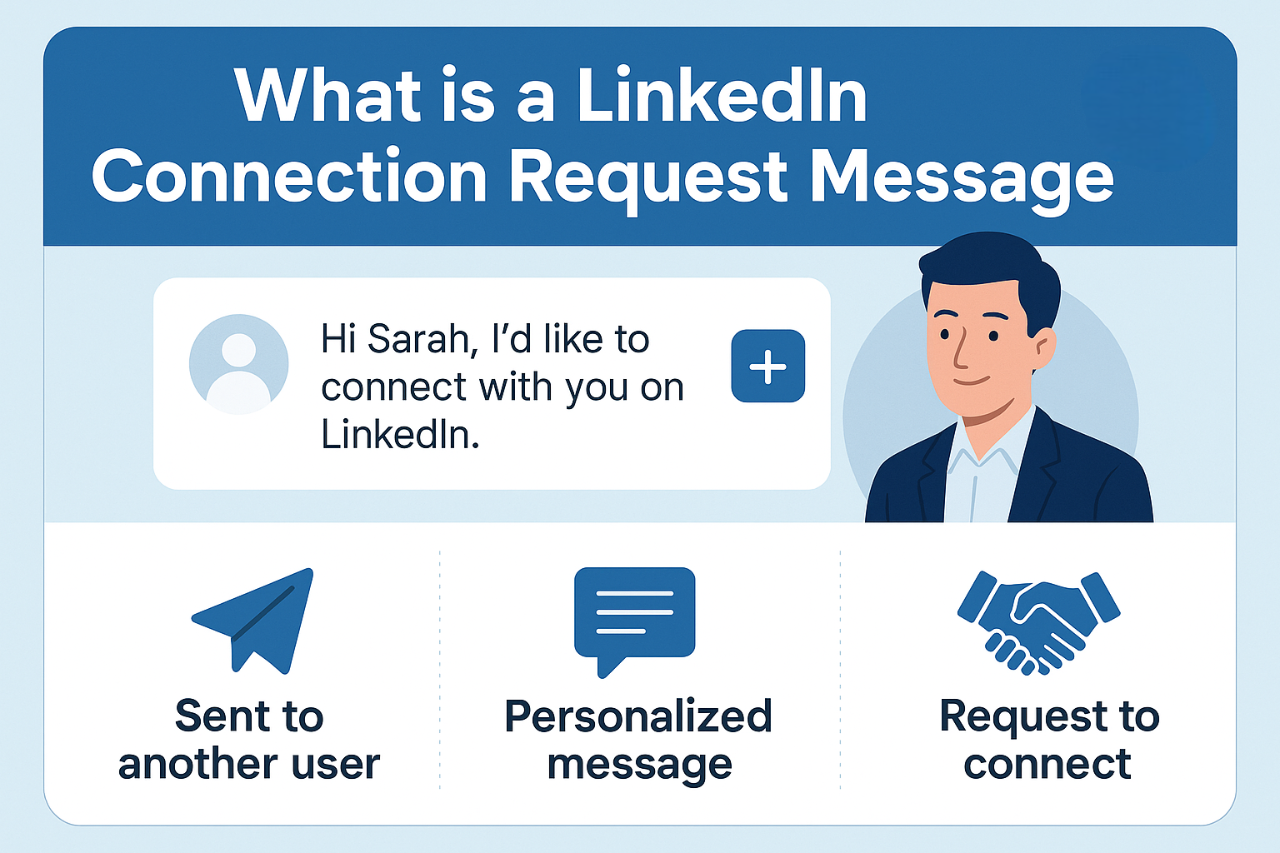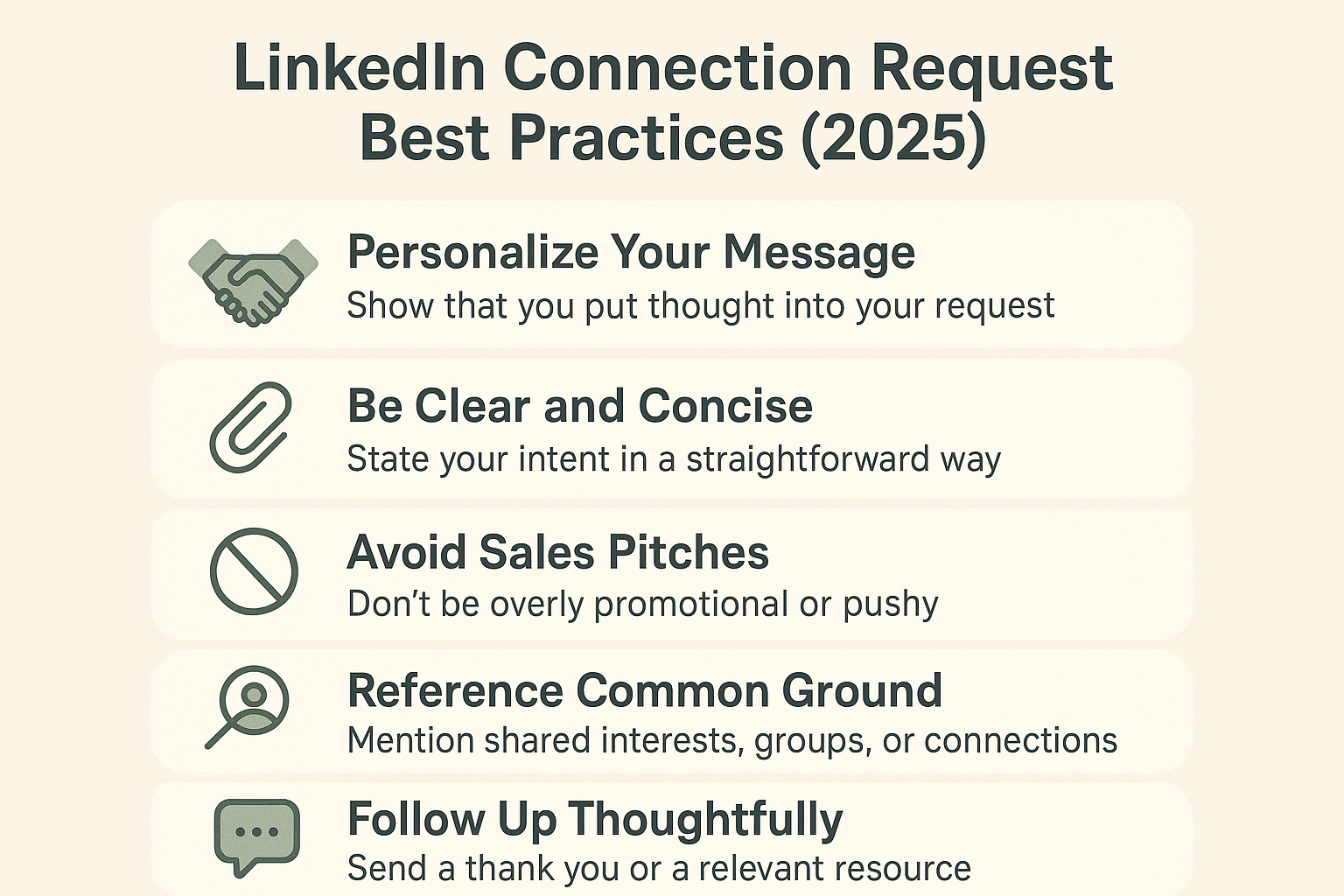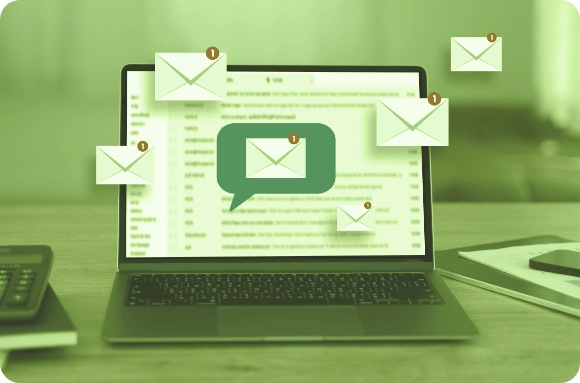When it comes to networking on LinkedIn, your connection message can mean the difference between being ignored or starting a meaningful conversation. Crafting the right message isn’t just about words, it’s about creating relevance, showing value, and building trust.
For professionals and businesses aiming to expand their LinkedIn network effectively, LiProspect offers cutting-edge tools to simplify and supercharge your outreach strategies. In this guide, we’ll provide actionable insights and 20+ powerful LinkedIn connection message templates tailored for different scenarios. Let’s help you turn every connection request into an opportunity.
What is a LinkedIn Connection Request Message? And How Does It Work?
A LinkedIn connection request message is a key part of your networking strategy, serving as your introduction, elevator pitch, and first impression all in one. When you visit someone’s LinkedIn profile and click on "Connect," you have two options: Send and Add note.

With LinkedIn Premium, you can access additional insights on profiles, including whether someone has read your message using LinkedIn Read Receipts, helping you refine your outreach approach. Personalizing your connection request with a note significantly increases your chances of acceptance.
However, it's crucial to craft your message carefully. Avoid sending overly sales-focused messages right away, as people typically don’t respond well to them. Also, don’t pretend you've thoroughly reviewed their profile if you haven't, as it’s usually quite obvious. And, keep your message concise, this is not the place for a long story.
Before sending a connection request, it’s essential to consider who you are reaching out to. Whether you're targeting a well-defined audience or a potential sales prospect, your message should be thoughtful and genuine.
Tools like LiProspect can help automate this process, allowing you to send personalized connection messages at scale, which is useful for ensuring your outreach feels authentic and not robotic. LinkedIn automation tools like this boost your ability to make meaningful connections without sacrificing authenticity.
Try LinkedIn Automation For Free
The Foundation: Optimizing Your LinkedIn Profile
Before sending a single connection request, ensure your LinkedIn profile is polished. Remember, most people will check out your profile before deciding to connect. A well-optimized profile boosts trust and credibility, making people more likely to accept your requests. For businesses, creating a LinkedIn Business Account is a great way to establish a professional presence and build brand authority, which can significantly improve your connection acceptance rate.
5 Key Areas to Optimize
-
Profile Photo: Use a high-quality, professional headshot.
-
Headline: Make it compelling by focusing on your value proposition (e.g., “Helping B2B Companies Generate Leads on LinkedIn | Growth Strategist”).
-
About Section: Highlight your expertise, achievements, and how you add value.
-
Banner Image: Create a custom banner that reflects your brand or goals.
-
Experience: List your key roles, focusing on measurable results.
With your profile looking its best, you’re ready to start connecting with the right audience.
What are the various Degrees Of Connection? and How to Use Them Effectively
LinkedIn primarily features 3 types of connections, each representing different degrees of relationships:
1st Degree LinkedIn Connections:
These are people you are directly connected with, either because you've accepted their invitation or they've accepted yours. A 1st-degree emblem will appear next to their name in search results and on their profile.
When crafting a LinkedIn connection message for a first-degree connection, you can easily reach out directly via message.
Example of a LinkedIn connection message template for 1st-degree connections:
2nd Degree LinkedIn Connections:
These individuals are connected to your 1st-degree contacts. They are mutual connections. You’ll notice a 2nd-degree emblem next to their name in the search results and on their profile.
For second-degree connections, sending a LinkedIn connection request message can help you build relationships. You can use the LinkedIn connection request message best practices 2025 to increase your chances of success. If you want to introduce yourself or pitch your offer, a short, personalized message is often best.
Example of a LinkedIn connection request message:
3rd Degree LinkedIn Connections:
These individuals are connected to your second-degree contacts, and you'll see a third-degree emblem next to their name. Generally, these connections might have zero or one mutual contact with you.
To engage with 3rd-degree connections, you might need to send an invitation through a LinkedIn connection invitation message sample. While it's a bit further removed, your message should still be clear and value-driven to catch their attention.
Example of a good LinkedIn message to connect:
LinkedIn Connection Request Best Practices (2025)

1. Personalize Your Message
Always include a brief, personalized note explaining why you wish to connect. This shows genuine interest and increases the likelihood of your request being accepted.
2. Be Clear and Concise
Keep your message within LinkedIn's 200-character limit. Clearly state your intent—whether it's to learn, collaborate, or discuss shared interests.
3. Avoid Sales Pitches
The initial connection request should focus on relationship-building, not selling. Avoid pitching products or services in your first message.
4. Reference Common Ground
Mention any mutual connections, shared groups, or similar interests to establish rapport. This context makes your request more compelling.
5. Follow Up Thoughtfully
If your connection request is accepted, send a thank-you message. Engage in a meaningful conversation to nurture the relationship.
For those looking to expand their knowledge and skills, LinkedIn Learning courses provide a wealth of resources to help you stay ahead in your industry.
Try LinkedIn Automation For Recruiters
20+ Best LinkedIn Connection Request Templates for Every Scenario
1. General Networking
“Hi {first_name}, I came across your profile and was impressed by your work in {industry}. I’d love to connect and exchange ideas on {specific topic}.”
2. Connecting Through Mutual Groups
“Hi {first_name}, I noticed we’re both members of {LinkedIn group name}. It’s great to connect with like-minded professionals. Looking forward to sharing insights!”
3. Sales Prospecting
“Hi {first_name}, I see you’re leading {company_name} in {specific role}. I specialize in helping businesses like yours achieve {specific outcome}. I’d love to share how we can work together. Let’s connect!”
4. Job Seekers to HR Professionals
“Hi {first_name}, I noticed you’re with {company_name}. I’d love to connect and explore potential opportunities in {department/role}. Let me know if there’s any way I can contribute to your team.”
5. Recruiting Candidates
“Hi {first_name}, your expertise in {specific skillset} is impressive. We’re currently looking for someone like you at {company_name}. Let’s connect, I’d love to discuss further!”
6. Webinar Attendees
“Hi {first_name}, I saw you attended {webinar name}. What was your favorite takeaway? Looking forward to connecting and discussing insights from the event.”
7. Inbound Profile Viewers
“Hi {first_name}, I noticed you recently viewed my profile. Is there something specific I can assist you with? Let’s connect to explore potential opportunities.”
8. Mentioning a Mutual Connection
“Hi {first_name}, I saw we both know {mutual connection}. Given our shared network, I thought it would be great to connect and collaborate!”
9. Highlighting Shared Pain Points
“Hi {first_name}, many professionals in {industry} struggle with {specific challenge}. I’d love to connect and share some strategies that have helped others overcome it.”
10. Local Networking
“Hi {first_name}, I’m growing my network in {city/region} and noticed your work in {industry}. Let’s connect and explore how we might support each other.”
Maximizing Results with LinkedIn Automation Tools
Scaling your LinkedIn outreach manually can be time-consuming. LiProspect simplifies this process with powerful automation features while ensuring your messages remain personalized and relevant. Here’s how:
-
Dynamic Personalization: Use placeholders to tailor each message without manual effort.
-
CRM Integration: Seamlessly track leads and follow up.
-
Analytics and Insights: Monitor campaign performance to refine your strategy.
If you are exploring deeper sales insights, Sales Navigator offers enhanced filtering tools, allowing you to narrow down your search and target the most promising prospects. With LiProspect, you can focus on building relationships while the tool handles the repetitive tasks.
LinkedIn Follow-Up Strategies
A connection request is just the first step. Following up effectively can help you stay top of mind and drive deeper engagement. Here are some proven templates:
1. Acknowledging Acceptance
“Hi {first_name}, thank you for connecting! I look forward to learning more about your work in {industry}. If there’s anything I can assist with, let me know.”
2. Sharing Valuable Content
“Hi {first_name}, I recently came across this {article/resource} on {topic}. I thought you might find it valuable, let me know your thoughts!”
3. Nudging Unresponsive Connections
“Hi {first_name}, just following up on my earlier message. If there’s a good time to chat about {specific topic}, let me know!”
Additionally, using a LinkedIn automation can help you schedule and personalize these follow-up messages at scale, making it easier to maintain consistent engagement with your network.
Conclusion: Ready to Elevate Your LinkedIn Outreach?










